|
Quantum Wells are very thin layers of material with lower energy gap between barrier materials with higher energy gap. Typical thickness of our QW is 10 nm. Great advantage of epitaxial QWs is they high optical quality: intense PL, narrow spectral lines, several states resolved. Below there is an figure on studying strain and relaxation in various zones within a QW using magnetic dopants and Optically Detected Magnetic Resonance,
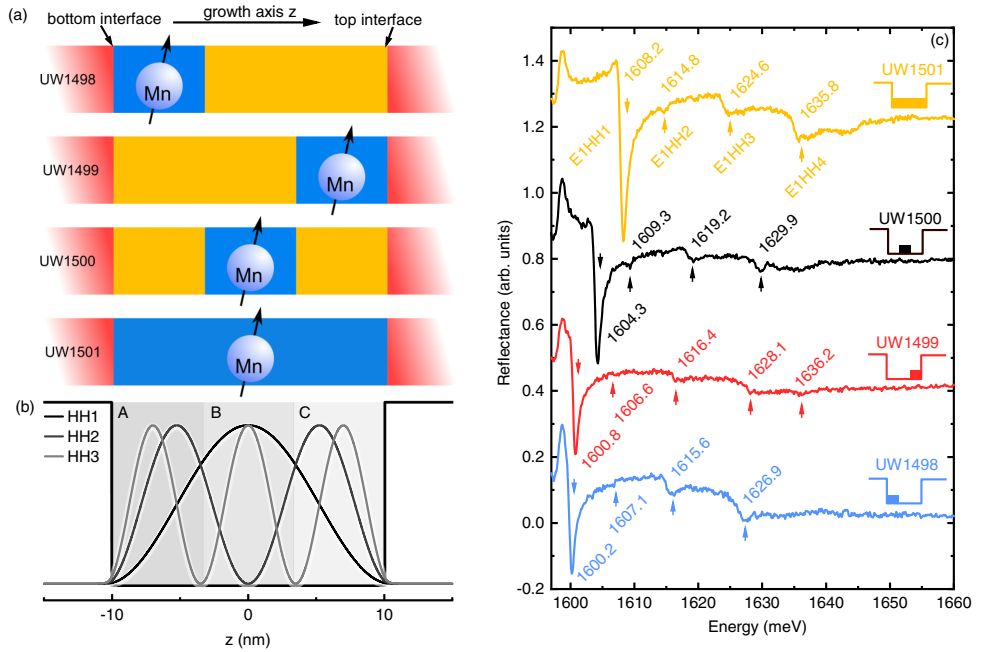
FIG. 1. (a) Schematic of the QWs samples used in this paper. (b) The spatial probability density of the first three heavy hole states in
the model sample—UW1501; (c) Reflectance spectra of studied samples measured at zero magnetic field. [A. Łopion et al., PRB 2022]
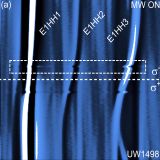 |
"Magnetic ion relaxation time distribution within a quantum well",
A. Łopion, A. Bogucki, W. Kraśnicki, K. E. Połczyńska, W. Pacuski, T. Kazimierczuk, A. Golnik, P. Kossacki,
Phys. Rev. B 106, 165309 (2022).

|
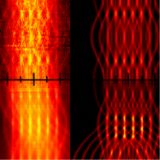 |
"Angle-resolved optically detected magnetic resonance as a tool for strain determination in nanostructures",
A. Bogucki, M. Goryca, A. Łopion, W. Pacuski, K. Połczyńska, J. Domagała, M. Tokarczyk, T. Fąs, A. Golnik, P. Kossacki,
Phys. Rev. B 105, 075412 (2022).


|
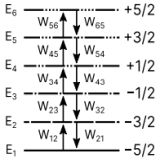 |
"Strain-induced speed-up of Mn2+ spin-lattice relaxation in (Cd,Mn)Te/(Cd,Mg)Te quantum wells: a time-resolved ODMR study",
A. Bogucki, A. Łopion, K. E. Połczyńska, W. Pacuski, T. Kazimierczuk, A. Golnik, P. Kossacki,
Phys. Rev. B 112, 035407 (2025).

|
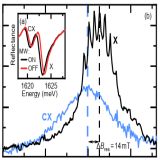 |
"Impact of the Hole Gas on Optically Detected Magnetic Resonance in (Cd,Mn)Te Based Quantum Well",
A. Łopion, A. Bogucki, M. Raczyński, Z. Śnioch, K. E. Połczyńska, W. Pacuski, T. Kazimierczuk, A. Golnik, P. Kossacki,
Phys. Rev. B 111, 035307 (2025).



|
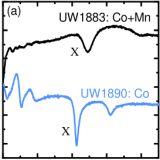 |
"Spin-lattice relaxation of (Cd,Mn)Te co-doped with Co ions",
A. Łopion, K. Oreszczuk, A. Bogucki, K.E. Połczyńska, W. Pacuski, T. Kazimierczuk, A. Golnik, P. Kossacki,
Solid State Commun. 396, 115753 (2025).


|
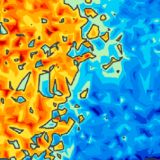 |
"Carrier localization in defected areas of (Cd, Mn)Te quantum well investigated via Optically Detected Magnetic Resonance employed in the microscale",
A. Dydniański, A. Łopion, M. Raczyński, T. Kazimierczuk, K.E. Połczyńska, W. Pacuski, P. Kossacki,
Solid State Commun. 396, 115755 (2025).


|
Well resolved excitonic lines allow us to study dissociation of charged excitons in QWs,
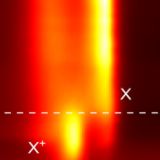 |
"Charged Exciton Dissociation Energy in (Cd,Mn)Te Quantum Wells with Variable Disorder and Carrier Density",
A. Łopion, A. Bogucki, K. E. Połczyńska, W. Pacuski, A. Golnik, T. Kazimierczuk, P. Kossacki,
Journal of Electronic Materials (2020).

|
QWs doped with Co and Fe exhibit strong PL quenching, but weak emission detectable.
I had also possibility of studying and simulating QWs grown in IFPAN and CEA.
We measured relaxation time of Mn in a QW,
 |
"Magnetization Dynamics Down to a Zero Field in Dilute (Cd,Mn)Te Quantum Wells",
M. Goryca, D. Ferrand, P. Kossacki, M. Nawrocki, W. Pacuski, W. Maślana, J. A. Gaj, S. Tatarenko, J. Cibert, T. Wojtowicz, G. Karczewski
Phys. Rev. Lett. 102, 046408 (2009).  |
we analyzed polarization of electron gas,
 |
"Measuring the spin polarization and Zeeman energy of a spin-polarized electron gas:
Comparison between Raman scattering and photoluminescence",
C. Aku-Leh, F. Perez, B. Jusserand, D. Richards, W. Pacuski, P.Kossacki, M. Menant, G. Karczewski,
Phys.
Rev. B 76, 155416 (2007).  |
and we were using strain to control magnetism
 |
"Spin engineering of carrier-induced magnetic ordering in (Cd,Mn)Te quantum wells",
P. Kossacki, W. Pacuski, W. Maślana, J.A. Gaj, M. Bertolini, D. Ferrand, J. Bleuse, S.Tatarenko, J. Cibert,
Physica
E 21, 943-946 (2004). |
|











